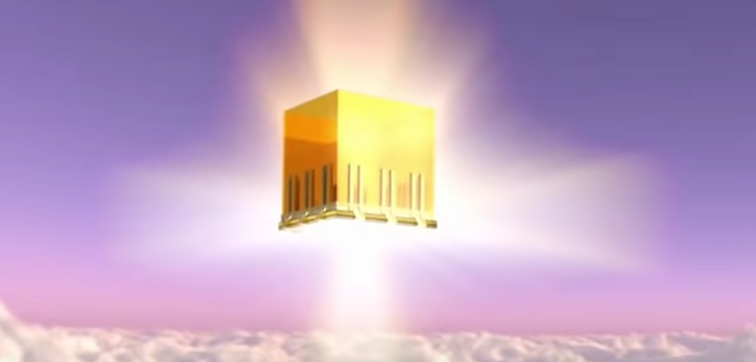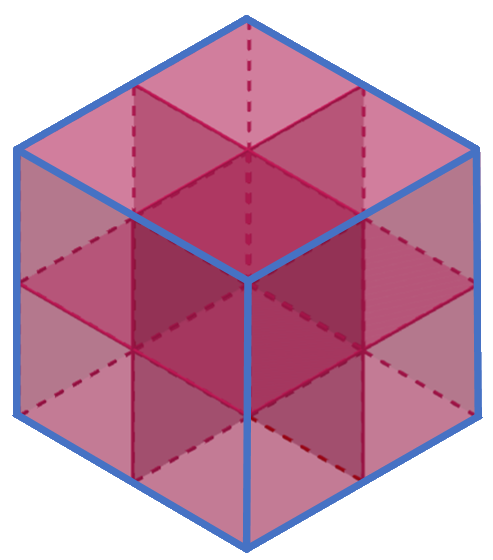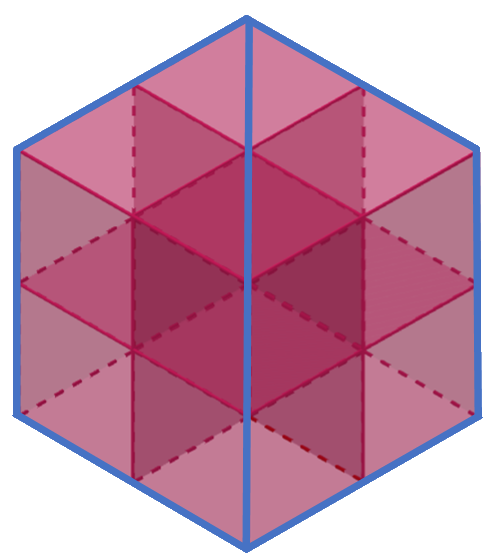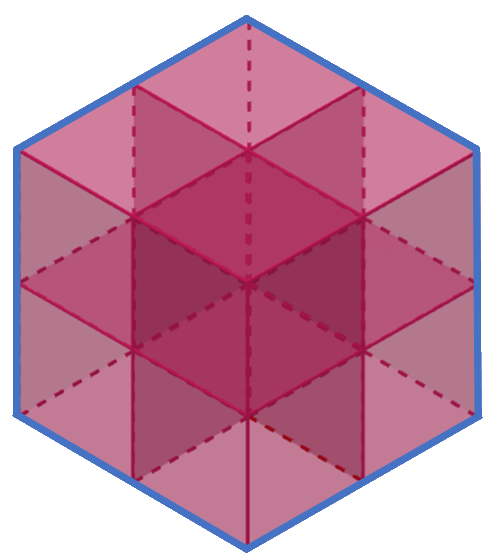New Jerusalem
Check out the YouTube animation about Revelation 20, 21 - New Jerusalem by Seth Michael.
The length, width and height of the New Jerusalem are all the same, suggesting a perfect cube (Rev. 21:16) ...
Most interpreters envision the New Jerusalem as a cube and, in my view, this is probably correct. A cube has twelve edges, but a pyramid has only eight. The description of the New Jerusalem makes abundant use of the number twelve and never uses the number eight. The New Jerusalem has twelve gates, twelve foundations, walls 144 cubits high, and dimensions measuring 12,000 stadia (Rev. 21:12-21). This wide-spread use of twelve coheres with the major use of twelve elsewhere in Revelation and the New Testament. It is the number of God’s people, and the city becomes the bride of Christ when it is filled with saved humanity.
While the text does not specify the shape, a cube would be consistent with the symbolism of Revelation.
What is theologically significant about the cube is that the only other cube in the Bible is the Most Holy Place of the Old Testament temple (1 Kings 6:20). Its sides and height were completely equal. The New Jerusalem, then, is modeled on the Most Holy Place. What is forbidden to all, but the High Priest in Old Testament times is now open to all the redeemed. Relationship with Christ elevates all to the roles of kings and priests. All have face to face engagement with God (Rev. 22:4) in the heavenly Most Holy Place, the New Jerusalem.
Look at John's revelation about the New Jerusalem in Revelation 21:1-27 from the KJV and The Greek New Testament. Notice that 21 = 7+7+7 [777] and 27 is the same as the number of books in the New Testament.
I made the following Cubic images in the free online geometry designer software called GeoGebra. The cubes represent the 66 Books of the Bible, 39 Books of the Old Testament, 27 Books of the New Testament, God's Cube, 888 Trinity, 12 Tribes of Israel and 12 Apostles, 24 Elders of Revelation, along with an image of the Star of David that can be seen within one of the cubic structures. The four-square cubic structure of the New Jerusalem as described in Revelation 21 inspired me to use the following cubes that I associated with the Bible.
I made the following Cubic images in the free online geometry designer software called GeoGebra. The cubes represent the 66 Books of the Bible, 39 Books of the Old Testament, 27 Books of the New Testament, God's Cube, 888 Trinity, 12 Tribes of Israel and 12 Apostles, 24 Elders of Revelation, along with an image of the Star of David that can be seen within one of the cubic structures. The four-square cubic structure of the New Jerusalem as described in Revelation 21 inspired me to use the following cubes that I associated with the Bible.
66 Books of the Bible
The image above is made from 20 cubes and looks like a basic Greek Cross. On the front and back of the image, there are three sets of 7 vertices across the horizontal cubes and three sets of 7 vertices down the vertical cubes. 66 books of the Bible can also be represented by the Star of David and Seal of Solomon.
The word 'seven' is used 463 times and 'sevens' twice along with over 250 additional lists or groups of seven items, names, places, churches, etc. in the King James Bible (1611). So, there are over 700 references to seven in total within the Scriptures. You may also come across the more archaic word 'sevenscore' that means 7 x 20, or 140. In biblical terms, seven mostly refers to completeness or perfection.
Each cube by itself has 8 vertices. If multiplied by the 20 cubes, there would be 160 independent vertices. However, in the construction of the cubes as shown above, 94 vertices are shared with other cubes, leaving 66 total vertices.
39 Books of the Old Testament
27 Books of the New Testament
God's Cube
888 - Trinity
12 Tribes of Israel and 12 Apostles
24 Elders of Revelation
Star of David
Latin or Christian Cross
The Latin cross is also called a crucifix because it represents Christ's crucifiction.









